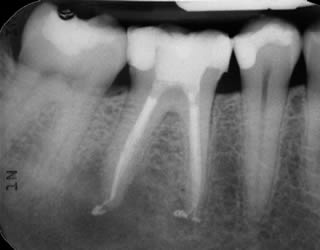How We Treat Dental Cavities At Our Wickford Practice

One of the most common problems we see on a daily basis is that of tooth decay. In today’s blog we look at how it can be treated.
Unless you have taken the very best care of your teeth, brushing and flossing diligently, and have also had some good fortune, it is likely that most of you reading this will have had a dental cavity at some point in your life. These are formed when bacteria start to feed on the sugars and starches contained in the food debris that is left in the mouth. When they do this, they produce acid and it is this that starts to damage the tooth enamel.
While tooth enamel is very strong and offers a high level of protection, prolonged exposure to these acids is likely to progress any damage until cavities are formed. Eventually, the cavities are likely to enter the inner part of the tooth which is softer, and start to advance more rapidly, often causing some pain and discomfort when it does.
In many cases, patients won’t be aware of small cavities that form and only notice them as they become more advanced and some discomfort is felt. There can also be an unpleasant taste coming from the tooth as well. As this is a progressive problem, it is important that you should have your teeth checked regularly by one of our Wickford dentists so that any restorations can be carried out as soon as possible, and before the problem becomes more severe.
Treating a dental cavity
There are a number of options available to treat a cavity and the most appropriate one will be selected once you have been examined by the dentist at the Cygnet Dental Practice. Depending on the nature of the damage, you are likely to have one of the following treatments.
Filling
Providing that the cavity has not created problems that are more significant, there is a strong likelihood that you will be given a filling. This is carried out under a local anaesthetic and the decayed material will be removed before being filled with an appropriate material. There are two main types of filling that are used by UK dentists. The most common one is amalgam, a material that has been used for a long time. It is very hard and durable, but is also dark in colour and therefore very visible. It often also requires more of the tooth to be removed to place it as it has to be shaped and can’t rely on its relatively poor bonding qualities.
The other option is a white tooth filling. This is a composite material which includes resin and other substances. This is almost as strong as amalgam but also has the benefits of not requiring as much of the tooth to be removed as it bonds very well. It can also be produced in a shade to match the rest of the tooth, enabling it to blend in naturally.
Crown
Where the damage is found to be too great for a filling to be appropriate, a crown may be used to restore the tooth. These are usually made from porcelain, sometimes combined with a metal. In order to attach the crown, not only will any decay need to be removed but the tooth will then need to be shaped so that a crown can be attached. This is done using a special dental adhesive. In the rare event that a crown becomes dettached, it is essential that you have it reattached by a dentist and should not attempt this yourself.
Root canal treatment
Once the bacteria and acids have entered the softer dentin region of a tooth, there is a risk that the bacteria will make their way into the root canals where blood vessels and the nerves are located. If this happens, a root canal procedure will be needed to save the tooth which would otherwise need to be extracted. This sometimes feared procedure is invasive but should cause no more discomfort than some other invasive procedures. To do this, the dentist will remove a top section of the tooth before removing the infected material from the root canals. These will then be cleaned and the cavities left filled with ‘gutta percha’, a material specially used for this treatment. To complete the tooth restoration, a crown will then be attached for extra strength and better aesthetics.
Extraction
Extracting a tooth will always be the last option and we will save a natural tooth wherever we can. Sometimes this is not possible, or the prognosis is so poor that we may recommend it be removed to save you more problems in the near future. Once a tooth has been removed, we can discuss replacement tooth options with you. This is likely to include a bridge, dentures or dental implants, depending on the situation.
Although the above restorations offer some very good options for restoring a tooth affected by cavities, it is naturally far better to avoid them in the first place. A good home brushing and flossing regime is important in this, as is a diet that is well balanced and not high in sugar. However well you look after your teeth though, they should still be examined by one of our Wickford dental team on a regular six monthly basis.
If you are experiencing any dental issues which you would like us to investigate or to make sure that you have a check up appointment booked with us, please call the Cygnet Dental Practice today on 01268 733078 and speak to one of our helpful reception team.
